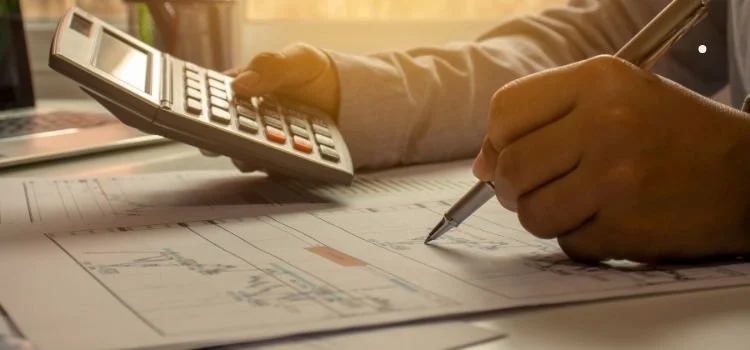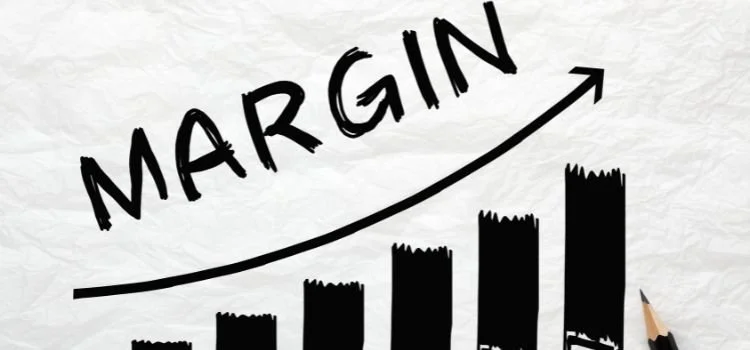Financial Planning for Businesses Selling Used Items
If you sell used items—whether it’s designer handbags, vintage watches, refurbished electronics, or second-hand cars—you’re in a business with huge potential but also unique financial challenges.
And that’s the truth. From fluctuating stock availability to unpredictable resale values, managing your finances in the second-hand market can be quite tedious.
Without a solid financial plan, you risk running out of cash at the wrong time, overpaying on taxes, or missing out on growth opportunities.
But what if you had complete clarity on your costs, cash flow, and profit margins — and you knew exactly when to restock, how to price for maximum profit, and how to set aside funds for tax and expansion?
With the right financial planning strategy, that’s exactly what you can achieve.
In this post, I’ll break down financial planning for second-hand retailers into simple, actionable steps. Whether you’re a sole trader running a vintage shop or a growing dealership using the VAT Margin Scheme, you’ll learn how to budget, forecast, and future-proof your business.
Financial Planning for Businesses
Table of contents
What is Financial Planning for Second-Hand Retail Businesses?
What Tax Considerations Should Second-Hand Retailers Know About?
Why Tracking Gross Profit Margin is Crucial for Used Goods Retailers
When Should Second-Hand Businesses Seek Professional Financial Advice?
What is Financial Planning for Second-Hand Retail Businesses?
Financial planning for second-hand retail is about more than just tracking income and expenses.
It’s about creating a roadmap that ensures your business stays profitable and sustainable despite the unpredictability of used goods.
Unlike traditional retail, you’re often dealing with inconsistent stock (because you can’t always order the exact same items again), variable purchase prices, and changing market demand. This makes careful planning even more important.
At its core, financial planning for a used goods business should cover:
Budgeting for stock purchases, refurbishments, marketing, and operating expenses.
Cash flow forecasting to handle slow periods without stress.
Tax compliance—especially if you’re using schemes like the VAT Margin Scheme.
Profitability analysis so you know exactly which items bring the best returns.
Good financial planning not only helps you avoid nasty surprises but also ensures you can reinvest profits strategically.
How to Budget Effectively When Selling Pre-Owned Goods
Budgeting in a used goods business is both an art and a science. Because no two items are exactly alike, and stock prices can vary, you need a budget that’s flexible yet precise.
Here’s how to make it work:
Start with your fixed costs
These include rent, utilities, insurance, software subscriptions (such as Xero for bookkeeping or Vend by Lightspeed for POS), and staff wages. Fixed costs are predictable and should be covered by your average monthly sales.
Financial Planning for Second-Hand Goods
Account for variable costs
These are costs that change depending on sales or stock purchases—such as buying inventory, refurbishment, repairs, packaging, and delivery.
Use the 50/30/20 approach as a guideline
While this is often applied to personal finance, it can work for business budgeting too:
50% of revenue for stock and operational costs.
30% for growth, marketing, and improvements.
20% for savings, tax, and profit.
Plan for seasonal changes
If you sell goods that are more in demand at certain times (e.g., jewellery before Christmas, bicycles in spring), allocate more of your budget to stock up before peak periods.
Build in a safety net
Set aside at least one month’s worth of expenses in an emergency fund to protect against unexpected dips in sales or sudden repair bills.
A well-thought-out budget gives you control and confidence. It helps ensure you’re never caught off guard, especially important in the second-hand market, where a few bad buying decisions can quickly eat into your profits.
What Tax Considerations Should Second-Hand Retailers Know About?
When you’re selling pre-owned goods in the UK, tax isn’t just about income tax; it’s about understanding the VAT rules that specifically apply to second-hand items. If you’re not on top of them, you could either overpay HMRC or, worse, find yourself facing unexpected penalties.
One of the most important things to know is the VAT Margin Scheme. This scheme is designed for businesses selling second-hand goods, such as jewellery, cars, watches, antiques, or collectibles.
Instead of paying VAT on the full selling price, you only pay VAT on the profit margin (selling price minus purchase price). This can significantly reduce your VAT bill, but it also comes with detailed record-keeping requirements.
To use the VAT Margin Scheme correctly, you’ll need to:
Keep clear purchase and sales records for every item.
Ensure goods qualify as "second-hand" under HMRC rules.
Submit VAT returns on time, reflecting only the margin, not the full sale value.
If you sell refurbished goods, you may also need to consider standard VAT rules when you add significant value through repairs. And for those trading online, remember that selling to customers outside the UK may trigger different VAT obligations depending on their location.
Getting professional advice early is key. HMRC’s guidance on the VAT Margin Scheme (official resource) is essential reading, but a tax specialist can help you avoid costly mistakes and ensure compliance.
How to Forecast Cash Flow for a Second-Hand Goods Business
If budgeting is your financial compass, cash flow forecasting is your weather radar.
It shows you what’s ahead, whether that’s a sunny stretch of healthy bank balances or a storm of low sales and high expenses.
In the second-hand retail world, cash flow can be unpredictable because stock isn’t replenished in the same way as new retail. You may have months where you land a great deal on inventory, meaning heavy outflows, followed by months of slower purchases but steady sales.
To forecast effectively:
Start with known income and expenses. Enter regular costs like rent, utilities, and payroll into a spreadsheet or accounting software like Xero or QuickBooks.
Estimate future sales based on past performance, adjusting for seasonal trends (e.g., more jewellery sales in December, more bicycle sales in spring).
Factor in inventory purchases. Since second-hand stock can be irregular, keep a realistic estimate of how much you typically spend each month or quarter.
Include a buffer. Always have a contingency line in your forecast for unexpected expenses, such as repairs or higher stock prices.
Review your cash flow forecast monthly. This helps you spot potential shortfalls early and take action, whether that means securing short-term financing, running a promotion to boost sales, or delaying a stock purchase until cash improves.
A good forecast doesn’t just keep you out of trouble; it gives you confidence to make smarter buying and growth decisions.
Why Tracking Gross Profit Margin is Crucial for Used Goods Retailers
Your gross profit margin (GPM) is one of the most telling numbers in your business. It measures how much of your sales revenue is left after paying for the cost of goods sold (COGS). In simple terms: how much you’re actually making from each item before paying overheads.
In the second-hand market, where purchase prices vary wildly, tracking your GPM is even more critical. Without it, you might think you’re making good money when in reality, some sales could be eating into your profit.
For example, if you buy a vintage watch for £1,000 and sell it for £1,300, your gross profit is £300. Your GPM would be 23%. If another watch costs £500 and sells for £900, your gross profit is £400, but your GPM jumps to 44%. While the second sale had a lower selling price, it was actually more profitable in terms of margin.
Why this matters:
Pricing decisions: Understanding your margins helps you set prices that maximise profit without scaring off customers.
Stock purchasing: You can focus on sourcing items that consistently deliver higher margins.
Performance tracking: Regularly reviewing your GPM shows you whether your buying and selling strategy is improving or needs adjusting.
Incorporating GPM tracking into your financial planning means you’re not just chasing sales, you’re chasing profitable sales. That’s the difference between just turning over stock and building a sustainable, thriving business.
Gross Profit Margin
When Should Second-Hand Businesses Seek Professional Financial Advice?
As a second-hand retailer, you might pride yourself on being hands-on with your finances. And that’s great—up to a point.
But there comes a stage when managing everything yourself could cost you more than bringing in an expert.
Here are some key signs it’s time to get professional financial advice:
You’re unsure about VAT rules or the Margin Scheme – Misapplying VAT can lead to hefty HMRC penalties or overpayments. An accountant with experience in second-hand goods can ensure you stay compliant while keeping your tax bills as low as legally possible.
Your cash flow feels unpredictable – If you’re constantly juggling bills and struggling to plan stock purchases, a financial advisor can help you set up systems and forecasts to stabilise your cash flow.
You’re scaling up – Expanding your store, adding an e-commerce channel, or taking on more staff introduces new tax, payroll, and reporting obligations.
You want to grow profitably – An expert can analyse your gross profit margin, spot where you’re losing money, and help you focus on the most profitable stock.
You don’t have to hand over full control; many second-hand business owners work with accountants or business advisors on a monthly or quarterly basis, getting guidance while still staying involved in day-to-day decision-making.
When you work with someone who understands your industry, you’re not just paying for compliance; you’re investing in peace of mind, better decision-making, and a more profitable future.
Conclusion
Running a second-hand goods business is exciting; you’re giving items a second life, delighting customers with unique finds, and building something you can be proud of. But without strong financial planning, even the best-run shop can run into trouble.
In this post, we’ve walked through the core pillars: understanding your tax obligations, forecasting your cash flow, tracking your gross profit margin, and knowing when to bring in expert help. Each of these steps will make your business stronger, more resilient, and ready to grow.
The beauty of the second-hand market is that no two businesses look exactly alike. Your success lies in finding the systems and strategies that fit your unique model.
Start small if you have to. Pick one area to improve today, whether it’s tightening up your VAT records, creating your first cash flow forecast, or reviewing your margins.
The sooner you start, the sooner you’ll feel in control, not just of your numbers, but of your future. Your financial plan isn’t just a spreadsheet; it’s the roadmap to the thriving, profitable second-hand business you’ve always envisioned.
Thanks for reading!
Meet Lewis
Lewis is a professional accountant and the founder of Rhombus Accounting. He regularly shares his knowledge and best advice here on his blog and on other channels such as LinkedIn.
Book a call today to learn more about what Lewis and Rhombus Accounting can do for you.




